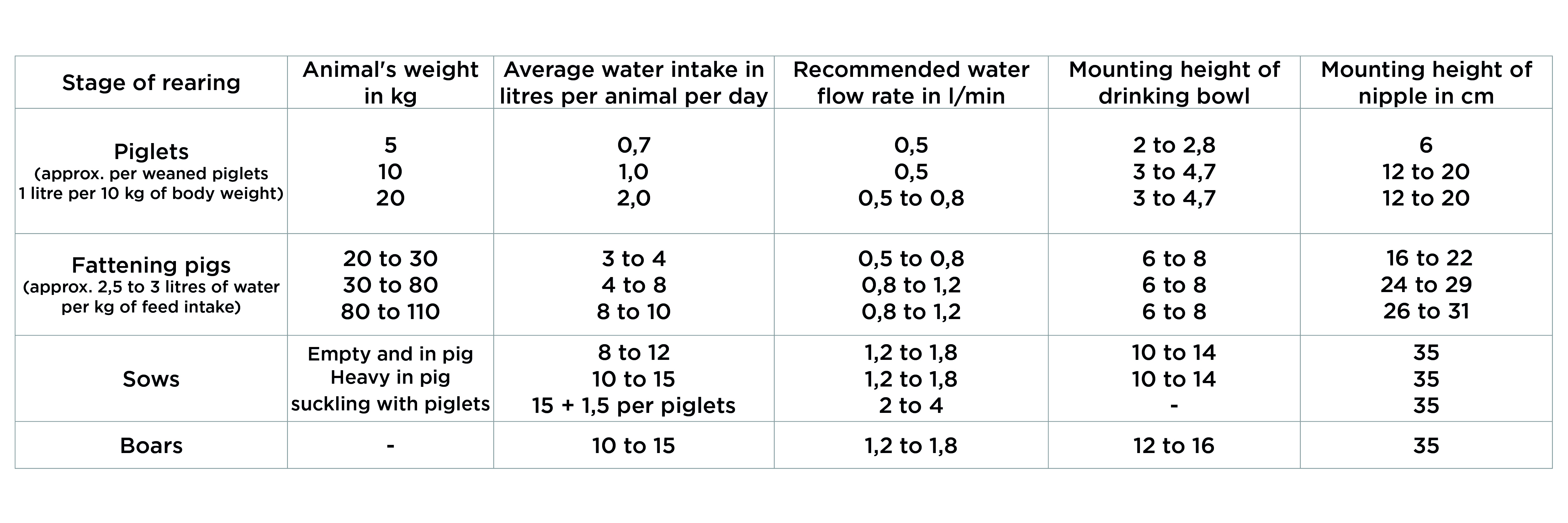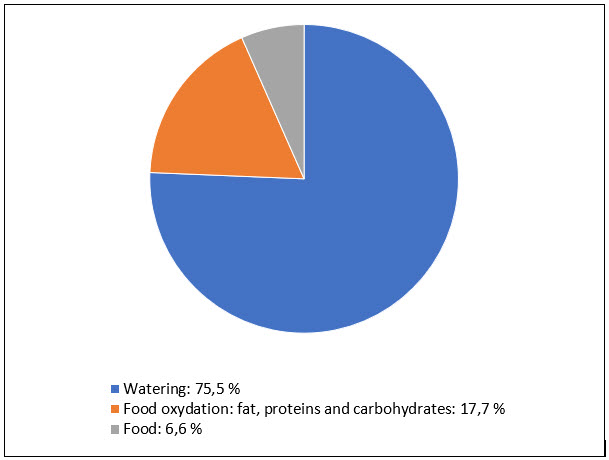Often neglected, water accessibility, freshness and cleanliness are vital elements for your pig herd. Why? Because they directly affect health and productivity of the animal and also, because a water loss of 10% can lead to the death of the animal. Hence the importance of ensuring that pigs never run out of it.
As with any livestock, make sure at all times that you have enough water stations to avoid competition between them and not penalize dominated pigs.
Here's a table as an indicator of the animal water needs, according to stage of growth. Data provided by SUEVIA.

There are three possible sources of water supply* :

In return, there are more paths through which water is evacuated: faeces, urine, growth, sweating and breathing*.
You must be observant of the condition of your animals because, at a slightest sign (loss of weight, hair or abnormal crowding around water stations) you can act quickly to resolve the situation.
When it's time to choose drinkers for your installations, different models are available:
1. Wet-dry feeder
2. SUEVIA cast-iron or stainless-steel water bowl for pigs
3. SUEVIA pig nipple, feeder nipple or nipple drinker
Depending on the type of waterer chosen, make sure to respect the installation height recommended by the manufacturer and to have the right water pressure.
It is also advisable to filter the water to avoid clogging the pipes and nipples with dirt. It will certainly save you from problems.
Here some basic hygiene and control rules for the maintenance of your equipment:
- Have clean pig waterer and wet-dry feeder
- Make sure that nipples, feeder nipple and nipple drinker are not clogged
- Measure from time to time pressure and water flow of your installations
- Few times a year, check and change o'rings if necessary. It's easy and low cost
- Check once a year if your pipes are clogged: limestone, tartar and residues can considerably reduce water flow
All these actions will allow your animals to have enough water and not to run out of it.
And a good water supply system will save you money by minimizing water loss and veterinarians fees.
It's up to you!
* Source: Francis Pouliot, Eng., M.B.A. and Valérie Dufour, M. SC. CDPQ









